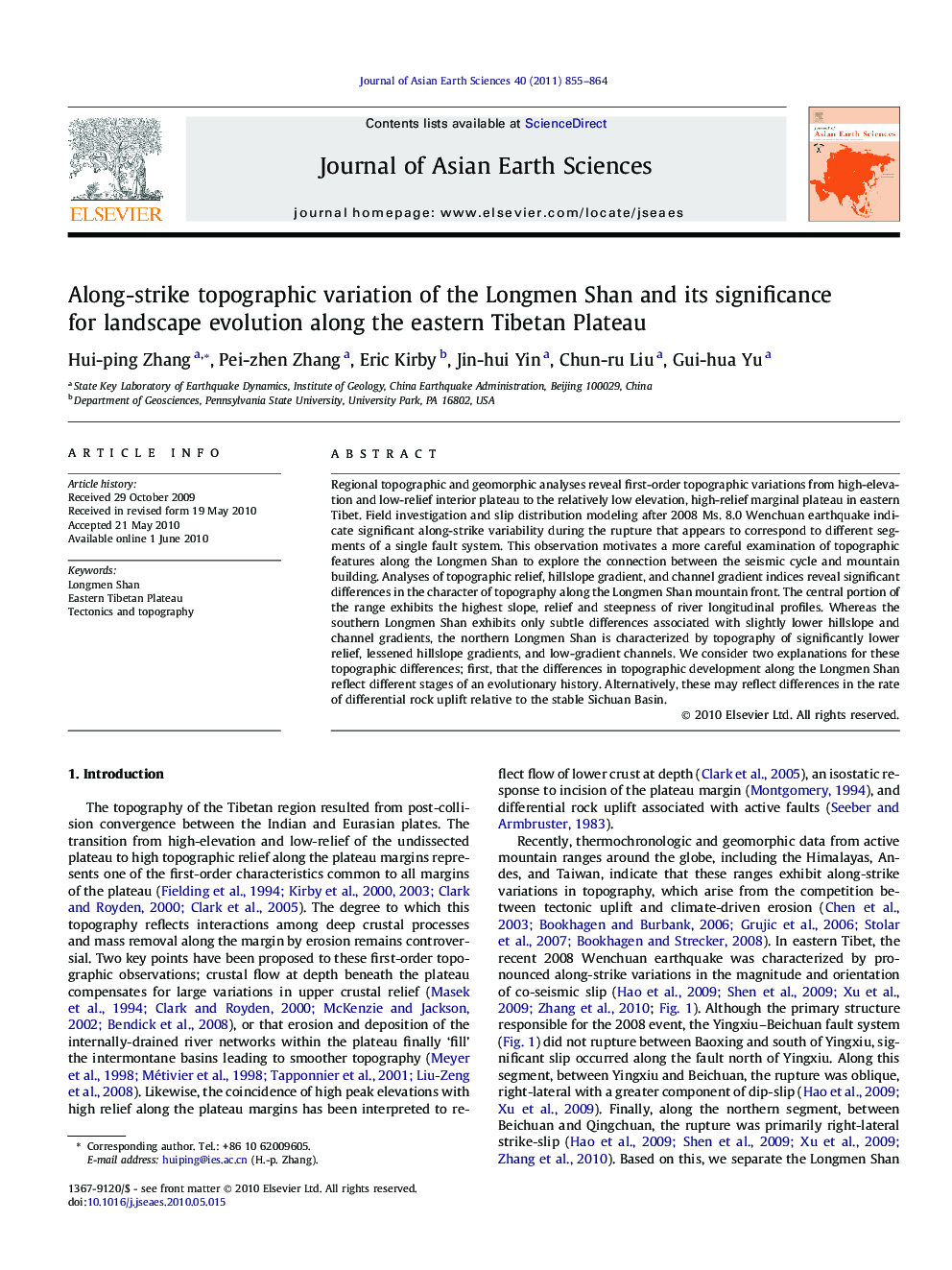| Article ID | Journal | Published Year | Pages | File Type |
|---|---|---|---|---|
| 4732010 | Journal of Asian Earth Sciences | 2011 | 10 Pages |
Abstract
Regional topographic and geomorphic analyses reveal first-order topographic variations from high-elevation and low-relief interior plateau to the relatively low elevation, high-relief marginal plateau in eastern Tibet. Field investigation and slip distribution modeling after 2008 Ms. 8.0 Wenchuan earthquake indicate significant along-strike variability during the rupture that appears to correspond to different segments of a single fault system. This observation motivates a more careful examination of topographic features along the Longmen Shan to explore the connection between the seismic cycle and mountain building. Analyses of topographic relief, hillslope gradient, and channel gradient indices reveal significant differences in the character of topography along the Longmen Shan mountain front. The central portion of the range exhibits the highest slope, relief and steepness of river longitudinal profiles. Whereas the southern Longmen Shan exhibits only subtle differences associated with slightly lower hillslope and channel gradients, the northern Longmen Shan is characterized by topography of significantly lower relief, lessened hillslope gradients, and low-gradient channels. We consider two explanations for these topographic differences; first, that the differences in topographic development along the Longmen Shan reflect different stages of an evolutionary history. Alternatively, these may reflect differences in the rate of differential rock uplift relative to the stable Sichuan Basin.
Keywords
Related Topics
Physical Sciences and Engineering
Earth and Planetary Sciences
Geology
Authors
Hui-ping Zhang, Pei-zhen Zhang, Eric Kirby, Jin-hui Yin, Chun-ru Liu, Gui-hua Yu,
